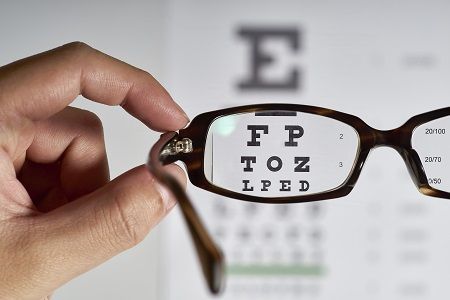CRISPR Could Cause Breakthrough in AMD Treatment
Chinese research highlights potential benefits of stem cell therapies and gene-editing technology.

Chinese researchers say advances in stem cell therapies and recent gene-editing discoveries are creating a golden opportunity for a breakthrough in age-related macular degeneration treatment.
In a new paper published this month, the scientists argue that induced pluripotent stem cells (iPSCs) and gene-editing technology have “great potential” to prevent or reverse AMD.
AMD is thought to be tied to both genetics and environmental factors. On the genetics side, the researchers were particularly interested in the gene known as “age-related maculopathy susceptibility 2,” or ARMS2. The gene is an intriguing subject because it appears to be important to the development of AMD, and yet it is stubbornly difficult to research. For one thing, ARMS2 is relatively new, evolutionarily speaking, and it only occurs in primates.
In addition, lead author Shuo Sun, PhD, of China’s Tianjin Medical University Eye Hospital, noted that the cellular function of ARMS2 in AMD is not fully understood, nor is it known whether medical treatment will affect risk alleles in ARMS2.
Some have suggested genotyping AMD patients might become a necessary step in the treatment of the disease. But Sun noted that studies into the efficacy of genotyping AMD patients have had mixed results, with the majority finding that genotyping was unnecessary and would not affect the efficacy of a given supplement or treatment.
A better option, according to Sun and colleagues, might be stem cell therapy. They said cell replacement appears to be an effective treatment for outer-retina diseases by replacing retinal pigment epithelium.
“Fortunately, the differentiation of retinal pigment epithelium (RPE) from human embryonic stem cells (hESCs), from mesenchymal stem cells (MSCs), and from iPSCs has created many potential ways to replace dead or dying RPE,” the authors wrote. “These cells have been shown to merge into the retina and regain functionality.”
The authors said RPE-replacement therapy using human embryonic stem cells has been one of the most promising possibilities, though they said the treatment has a number of challenges, including the possibility that the patient will be subject to lifelong risk of immune rejection. The use of human embryonic stem cells also remains controversial among some religious groups.
More recently, the authors said, interest has grown in using retinal pigment epithelium derived from induced pluripotent stem cells. This method eliminates the risk of immune rejection. Still the authors note that not much is known about the specific pathology of ARMS2 risk alleles, and given the lack of animal models, research to pin down the pathology has been hard to come by.
However, a breakthrough could be on the horizon. The authors noted that the widely hailed creation of clustered regularly interspaced short palindromic repeats/Cas-9 (CRISPR/Cas9) technique opens the possibility of editing genes. Gene-editing could make it much easier to learn how ARMS2 and other risk alleles operate.
“Researchers can now edit the genotypes at will, and the resulting iPSC-RPE cells can serve as models of specific ARMS2 risk alleles,” the authors found.
In conclusion, the authors say, there’s still a long way to go. However, they argue that recent research has created a clear pathway forward toward a future where the growth of AMD can finally be curbed.
The paper, titled “Bringing the age-related macular degeneration high-risk allele age-related maculopathy susceptibility 2 into focus with stem cell technology,” was published June 6 in Stem Cell Research & Therapy.
Related Coverage:
- Study: Gene Therapy Shows Promise in Quest to Reverse AMD
- Marker Found for Severity of Age-Related Macular Degeneration
- Genetics-Based Advances in Retinitis Pigmentosa Research